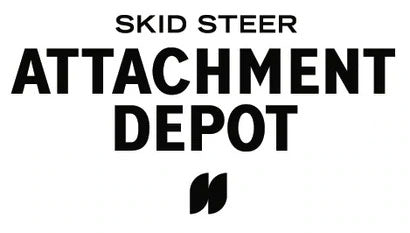10 Skid Steer & Tractor Safety Tips
If you're reading this, chances are you're already familiar with the many benefits of skid steers and tractors. But how familiar are you with the potential hazards of these machines?
Although tractors and skid steers aren't typically the largest piece of equipment on a farm or job site, they are often the most commonly used. Not to mention, their use is only predicted to grow across industries within the next ten years.
While this is great news for workers who will undoubtedly experience increases in efficiency and productivity, this also means an increase in chances for hazards and accidents. And in some cases, accidents involving skid steers and tractors result in serious or even fatal injuries.
10 Safety Tips for Skid Steers and Tractors
If you're working with skid steers or tractors, safety should always be your top priority. These heavy-duty machines can be dangerous if not used correctly, which means that most accidents are preventable.
To help you stay safe while operating a skid steer or tractor, here are ten safety tips to keep in mind:
1. Always read the operator's manual before using any machine. This may seem like common-sense, but you'd be surprised how many people try to operate a machine without familiarizing themselves with its controls and how to use it to avoid any potential hazards.
2. Inspect the machine before each use. Secure all equipment and properly mount all attachments before operating. Ensure that all safety guards are in place and that there are no loose parts or damages that could cause an accident.
3. Never operate a machine while under the influence of drugs or alcohol. This includes prescription medications that could impair your judgment or reaction time.
4. Pay attention to your surroundings at all times. Watch for potential hazards and obstacles such as bystanders, power lines, fences, ditches, and other vehicles and machinery. If you must operate near pedestrians, give them at least 50 feet of space and a verbal warning before you start moving.
You should also use caution when backing up the machine. If possible, have a spotter guide you to avoid accidents when reversing.
5. Don't take unnecessary risks. If something doesn't feel right, or you're unsure how to do something safely, don't do it. Ask for help from someone who knows more about the machine than you do.

6. Always wear proper clothing and safety gear when operating a skid steer or tractor. Avoid loose clothing that can get caught in the machinery, and wear a helmet, ear protection, and sturdy work boots.
7. Do not allow anyone to ride on the skid steer or tractor with you. This is extremely dangerous and could result in serious injuries if an accident occurs.
8. Be careful when working on slopes or uneven terrain. Tread lightly and be aware of your surroundings. The machine could tip over if not used properly on these surfaces.
9. Never leave the machine unattended while it is running. Turn off the engine and set the parking brake before exiting the cab to avoid accidents.
10. Clean, maintain and store your equipment. Once you're done for the day, safely remove your attachments and give them and your machine a quick clean with a hose or power washer. Not only is this an important maintenance step, but it will remove dirt and debris to ensure all safety decals are legible to everyone.
Common Hazards and Accidents Involving Skid Steers and How to Avoid Them:
Skid steers are exceptionally versatile pieces of equipment. But because of their many features, skid steers can pose additional hazards.
One of the most common accidents involving skid steers is operator crushing, which occurs when the operator is caught between a moving part of the machine and a stationary object. This can often be prevented by ensuring there is adequate clearance around the skid steer before operating it.
Rollovers are also one of the most dangerous types of skid steer accidents. They can happen if the machine is not used properly on steep inclines, is turned too sharply or quickly, or hits a hole or other obstacle while turning.
To avoid rollovers, be sure to stay well away from holes and the edges of ramps, ditches, loading docks, retaining walls, and trenches. And before you do anything at all, know the load capacity of your skid steer, which you can find in the manual or equipment label. An unbalanced load has a higher chance of tipping backward or forward — even sideways if on a slope.
Common Hazards and Accidents Involving Tractors and How to Avoid Them:
Tractors are also powerful machines often used for tasks requiring precise movements. Unfortunately, this makes them prone to accidents.
One of the most common tractor accidents is rollovers. Like skid steers, these can also occur when the tractor hits a patch of uneven terrain or is turned too quickly. However, tractors are even more prone to rollovers as they are top-heavy. Many have a high center of gravity and lack rollover protective structures.
To avoid overturns and rollovers, always be aware of your path's surroundings and obstructions, drive safely, and use caution when driving on a hill or slope. If you find yourself in a situation where the ground is uneven or soft, get off the tractor and assess the situation before driving any further.
Another common hazard is getting caught between the tractor and another object, such as a fence post or gate. This can happen if you're not paying attention while backing up or trying to squeeze through a narrow space. To avoid this, always be aware of what's behind you when backing up, and take your time when going through narrow spaces.

Work Smarter, Not Harder
It can take years of experience to learn how to operate a tractor or skid steer safely, and even then, accidents can happen. While you should never operate equipment without adequate preparation, no amount of experience can replace awareness and good judgment when using any agricultural or construction machinery. So follow these simple safety tips and always practice caution to ensure a safe and productive work environment for all!




